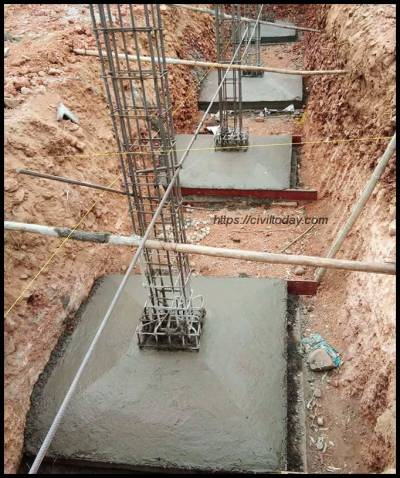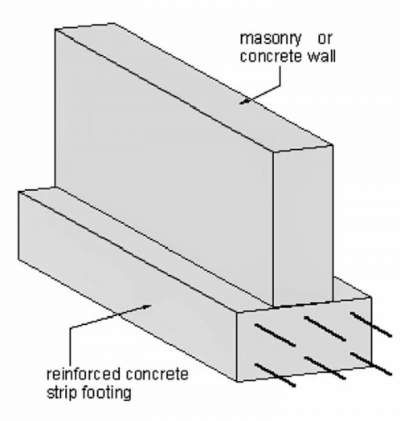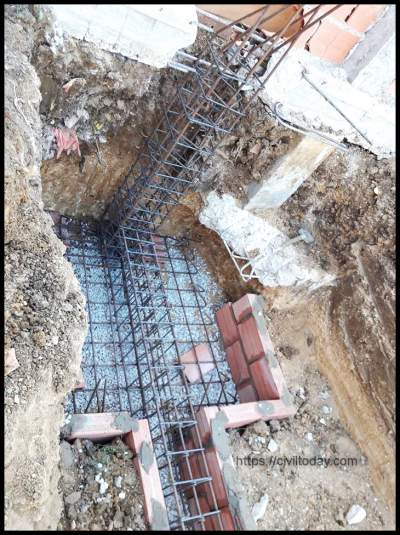Significance of Stable And Solid Concrete Slab Foundations
For a building to be stable and durable, a solid concrete slab foundation is required. A correctly built foundation gives a structure a stable basis on which to rest distributes the building's weight uniformly, and aids in preventing settling, cracking, or other structural problems. The strength and stability of the structure may be jeopardized by foundational cracks. These cracks can enlarge over time and enable water to seep in, which can cause more damage, perhaps resulting in the growth of mildew, and compromising the structural integrity of the foundation if left unattended.
To avoid these problems from getting worse, foundation cracks in concrete slabs must be repaired. By repairing the cracks, you may help keep the structure stable and secure, avoid water damage and insect infestations, and preserve or raise the value of your home.
Repairs can range from easy fixes that you can do by yourself to more involved fixes needing the assistance of a professional engineer or foundation repair specialist, depending on the degree and source of the cracks.
Potential Risks that Come with Cracks in Slab Foundations
It's crucial that you handle cracks in a concrete slab foundation as soon as possible for several reasons.
Over time, these cracks can become worse and may even compromise the structural integrity of the building by causing the issue to get worse and cause more damage. It can eventually lead the building to collapse.
If a property has a cracked foundation, its value can decrease significantly, and you may be forced to visit such real estate market experts or a local cash buyer investor to sell your house. Fixing cracks is a good way to keep a property in good condition and potentially raise its value.
When there are cracks in a foundation, it can allow moisture to seep in. This can cause various problems such as mold growth, water damage, and other related issues. Therefore, it is important to prevent moisture from entering the foundation. If you repair cracks in your foundation, it can help prevent moisture from seeping in and causing damage.
Get foundation cracks repaired immediately as it can save you money in the long run. If you postpone repairing something that needs fixing, it may lead to more severe damage, which could end up costing you more money to repair.
It's important to prioritize safety when it comes to building maintenance. A foundation that has cracks can potentially put the people inside the building at risk. It's important to quickly repair any cracks in a building's foundation to keep the people inside safe and prevent any accidents from happening.
If there are any cracks in your foundation, it could be a possible entry point for pests like termites, ants, and rodents. Therefore, it's important to prevent these cracks to keep pests away in order to avoid pest infestations and the damage they can cause.
How Cracks Develop
It is important to repair the cracks in the slab foundation but first, we need to pay attention to how the cracks develop. Concrete slab foundations can develop cracks due for various reasons. It is crucial to identify the root cause of the crack before proceeding with any repairs. Cracks in a concrete slab foundation can occur due to various reasons. Some of the common causes include:
Settlement
Settlement is a phenomenon that happens when the soil beneath a foundation compresses or shifts, leading to the foundation sinking or settling. When a building experiences excessive pressure or stress, it can lead to the development of cracks in its foundation and other types of structural damage.
Soil Movement
Soil movement is a natural occurrence that can happen for various reasons. Some of these reasons include changes in temperature, moisture levels, or the composition of the soil. If the soil underneath a building shifts or moves, it can lead to the foundation of the building cracking or shifting as well.
Improper Curing
Improper curing happens when the concrete slab foundation is not given enough time to cure or harden properly. When concrete dries, it may shrink or crack due to this.
Overloading
When a foundation is subjected to more weight or pressure than it can handle, it is known as overloading. If this happens, it can lead to the foundation cracking or failing.
To make sure that any repairs to a concrete slab foundation are effective in the long run, it's crucial to identify the root cause of the crack. If the root cause of the crack is not resolved, it is probable that the crack will reappear and may lead to more harm and cost. For example, if the crack is a result of settlement, it may be necessary to stabilize or reinforce the soil. If the crack in the concrete was caused by improper curing, it may be necessary to replace the concrete or ensure that it is properly cured in order to fix the issue. Sometimes, it might be essential to seek advice from a professional engineer or a foundation repair specialist to figure out the most suitable plan of action.
How to Fix the Cracks Step by Step
There are several ways to fix the cracks in the concrete slab foundations. However, here I am presenting the most effective methods to fix this issue.
Clean the crack
When repairing a crack in a concrete slab foundation, it is crucial to clean the crack thoroughly as it is a vital step in the process. Cleaning the crack before applying repair material is crucial for several reasons.
When you're trying to repair something, it's important to make sure the surface is clean. If there's dirt or dust on the surface, the repair material won't stick properly. This is because dirt and dust can get in the way and prevent a strong bond from forming. So, it's crucial to clean the surface before attempting any repairs. When you clean the crack, you get rid of any loose material, debris, or dust that might hinder the bonding process. Making sure that the repair material adheres well to the crack's surface is important to ensure a proper bond.
Cleaning the crack will help you get a clearer view of the complete damage. By using this method, you can identify the most suitable way to repair the crack and make sure that the entire crack is filled correctly.
Apply the epoxy or polyurethane crack filler
Once you have cleaned the crack, the next step in repairing cracks in a concrete slab foundation is to apply either an epoxy or polyurethane crack filler. If you have a crack in your surface, the best solution will depend on how big and serious the crack is. In general, you can choose between using an epoxy or polyurethane crack filler to fix the issue. The purpose of these materials is to deeply penetrate the crack and establish a sturdy connection.
When selecting a material, it is important to choose the one that is most suitable for the intended use. Consider factors such as strength, durability, flexibility, and cost when making your decision. The crack filler you choose to use will vary depending on the size and location of the crack.
When it comes to filling concrete cracks, epoxy and polyurethane are two materials that are commonly used. If you're dealing with larger cracks, epoxy is a great choice because it's a strong and durable material. In contrast to epoxy, polyurethane is more pliable and is ideal for filling smaller cracks or ones that are still in motion.
After applying epoxy or polyurethane crack fillers, it is important to let them dry completely. The drying time can vary depending on the specific product used and the conditions in which it is applied. After the filler has dried, it will become sturdy and long-lasting.
Curing
Once you have applied the crack filler to the concrete slab foundation, the next step is to let it cure. This step involves the following actions:
It's important to follow the instructions provided by the manufacturer. These instructions will give you specific guidance on how long you need to wait before walking on the filler or doing any other work on the foundation. To make sure that the filler sets properly and gives a long-lasting repair, it's crucial to carefully follow these instructions.
The time it takes for something to cure can be influenced by the temperature and humidity of the environment around it. If the temperature is colder or the humidity level is higher, the curing process will take longer. On the other hand, if the temperature is warmer or the humidity level is lower, the curing process will be faster. Generally, epoxy fillers take longer to cure whereas polyurethane fillers typically harden and become solid within a few hours. To ensure a lasting repair, it's crucial to let the filler cure for the recommended time. Rushing the process may compromise the quality of the repair.
Sealing the crack
Once the crack filler has fully cured, the subsequent step in repairing cracks in a concrete slab foundation involves sealing the crack. This step involves the following actions:
When it comes to sealing concrete, it's important to choose the right type of sealer for the job. There are a few different options to consider, including penetrating sealers, acrylic sealers, and epoxy sealers.
To ensure that the sealer adheres properly, it is important to clean the surface of the foundation and remove any debris or loose material before applying it.
After applying the concrete sealer, it is important to give it enough time to dry. The amount of time it takes for the sealer to dry will depend on the specific product used and the environmental conditions.
If you seal the crack, it will stop water from getting inside and cause more harm. It's crucial to pay extra attention to cracks that are situated in places where water can gather, like basements or garages. In addition, sealing the crack in the foundation can enhance its appearance and make it less susceptible to stains and other types of damage.
It's worth mentioning that sealing a crack may not be a permanent solution if the crack is a result of a significant structural problem, like a foundation that's shifting. If you're dealing with this kind of problem, it's recommended that you seek the advice of a professional engineer or foundation repair specialist. They can provide you with a more thorough and effective repair solution.





